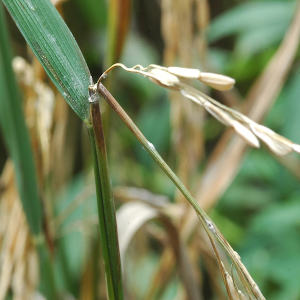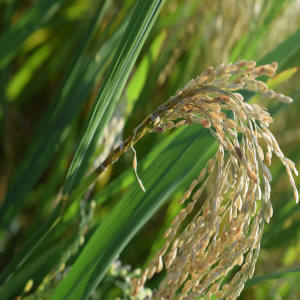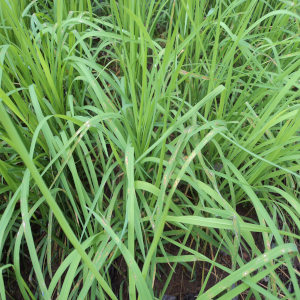- සි
- த

- Address : Bathalagoda, Ibbagamuwa, Sri Lanka
- E- Mail : rrdi@doa.gov.lk
- Telephone : +94 372 258561
- Fax : +94 372 259881
Rice In Sri Lanka - Rice Diseases
Rice blast
Causative agent
Fungus, Magnaporthe grisea (Pyricularia grisea)
Plant part and life stage affected
Any life stage of the plant could infects by this pathogen.
Plant parts that are infected could be, leaves, nodes, panicles, or seeds.
Rice blast is named as leaf blast, nodael blast, panicle blast, or neck blast, based on the part of the plant infected.
Symptoms
Spindle-shaped leaf spots with brown or reddish/yellowish-brown margins, ashy centers, and pointed ends are the common symptom.
Fully developed lesions normally measure 1.0 -1.5 cm in length and 0.3 -0.5cm in breadth.
When nodes are infected, they become black and rot.
Infection of panicle base causes rotten neck or neck rot and causes the panicle to fall off.
When the infection is severe, secondary branches and grains are also affected resulting in partly filled grains, known as “whiteheads”. Characteristics vary with the crop life stage, susceptibility level of the cultivar and environmental factors.
Conditions that favour the disease
Low temperature during night (17-20OC)
High humidity
Excessive application of nitrogen fertilizer
Foggy and dark climatic conditions
High densities of plants in the field
Susceptible varieties



Disease Management
Within the crop season
Application of urea in recommended dosages or application of urea based on leaf colour chart.
If the disease spread fast, following fungicides could be applied
-
-
-
- Tebuconazole 250g/l EC – dissolve 10 ml in 16 l of water (8-10 tanks per acre)
- Isoprothiolane 400g/l EC – dissolve 20 ml in 16 l of water (8-10 tanks per acre)
- Carbendazim 50% WP/WG – dissolve 11 g/ 11 ml in 16 l of water (8-10 tanks per acre)
- Tricyclazole 75 %WP – dissolve 10 g in 16 l of water (8-10 tanks per acre)
-
-
If the crop is infected, following management options should be applied for the next season
